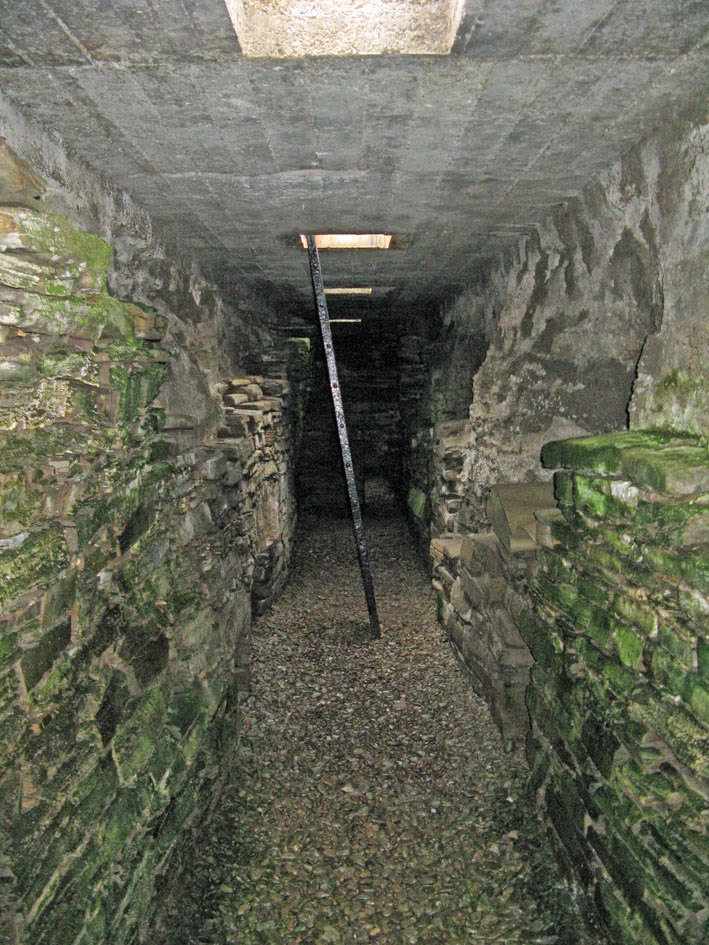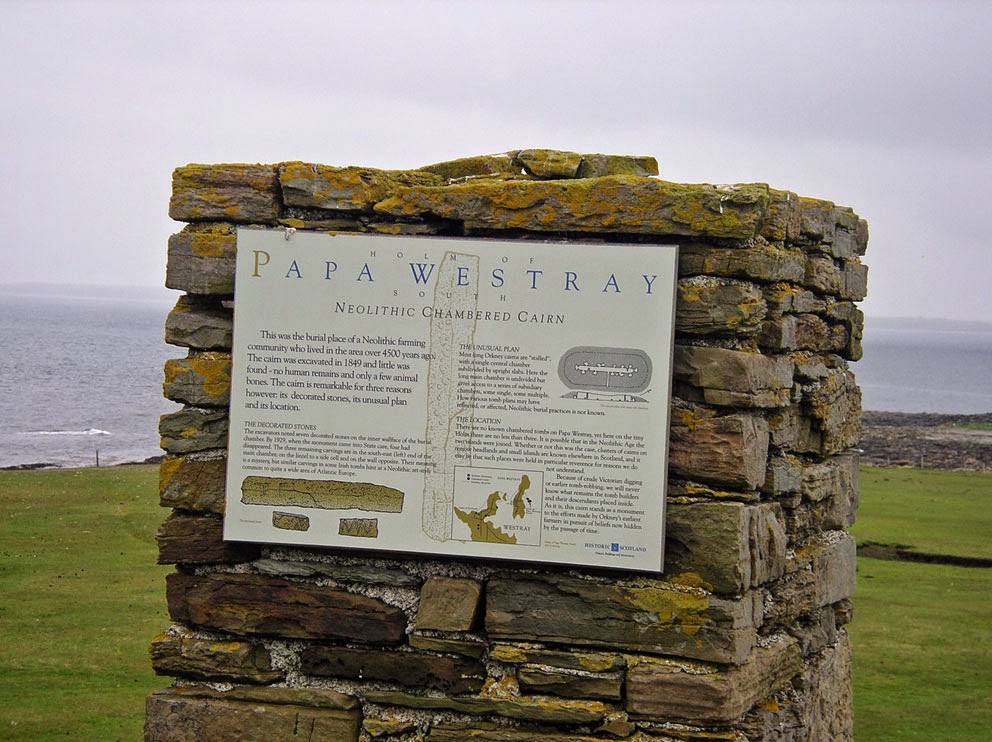During my Orkney cruise we landed on Papa Westray. Once ashore I set out to find the Chapel of St Tredwall, and as I walked up the east coast of the island I noticed a tiny island just offshore. On it stood a large mound, capped with what appeared to be a standing stone.
 |
| Holm of Papa seen from Papa Westray |
I looked at the map and discovered the island was Holm of Papa, and on it are three chambered cairns. The large one that I could see was marked on the map with the 'Historic Scotland' logo; meaning it was a significant site. But, strangely, there was no 'Standing Stone' marked as well, although there certainly appeared to be one, and a big one at that.
Back on the boat I looked up Holm of Papa in the Island Bible (Hamish Haswell-Smith's The Scottish Islands). In it he mentions that the cairn is of the Maeshowe type, but much older, and possibly connected to the settlement at Knap of Howar on Papa Westray. The cairn is huge, with 12 side chambers, and carved on some of the stones inside are strange eyebrow and cup mark carvings. Later I would learn that the top of the cairn was rebuilt, and a cement roof put in place in 1929. For photos of what it looked like before restoration see this RCAHMS page. The cairn is also known as Diss o' the Holm. (See this link - though I have no idea what 'Diss' means.)
I had to see this amazing thing first hand, so I asked if we could pay a visit to Holm of Papa after we set sail from Papa Westray. Fortunately, on the following day the sea was calm, and so we were able to land. On close inspection what had appeared from a distance to be a standing stone was actually a large square cairn, and on it was the Historic Scotland reader-board describing the tomb below.
I had to see this amazing thing first hand, so I asked if we could pay a visit to Holm of Papa after we set sail from Papa Westray. Fortunately, on the following day the sea was calm, and so we were able to land. On close inspection what had appeared from a distance to be a standing stone was actually a large square cairn, and on it was the Historic Scotland reader-board describing the tomb below.
 |
| Tomb diagram on the plaque |
The original entrance to the tomb was blocked up, but atop the mound a steel hatch opened up to reveal a ladder. It was time to descend into the dark tomb.
 |
| Original entrance - now closed off |
 |
| Down we go |
Once you get into the tomb it is not so dark, as two thick skylights have been inserted in the roof.
 |
| Central Aisle |
The ground was covered with a layer of wet and muddy gravel, and we got quite dirty crawling through the low tunnels that give access to the end chambers (next photo). It was only after we'd crawled through them that we discovered a set of 'crawling mats' stored on a dark side ledge.
 |
| The low opening that leads to one of the end-chambers |
Inside one end chamber we found the strange eyebrow and cup carvings.
 |
| The North Cairn |





Hi Marc, this is a very informative blog thanks very much for taking the time to do it. Incidentally the island is named Holm of Papa Westray.
ReplyDelete